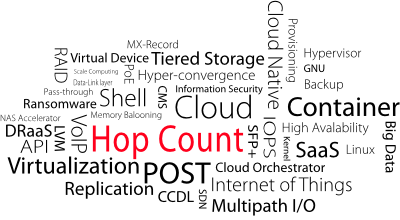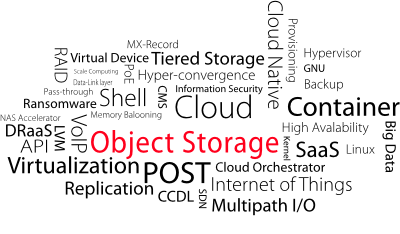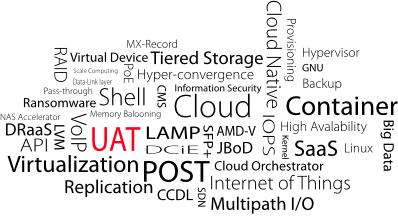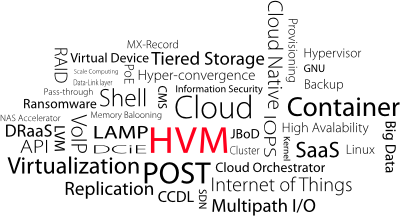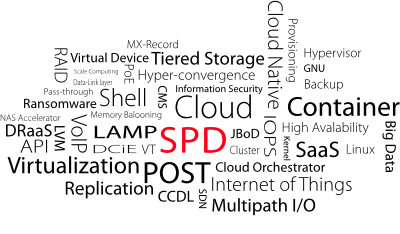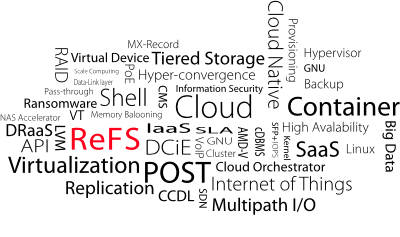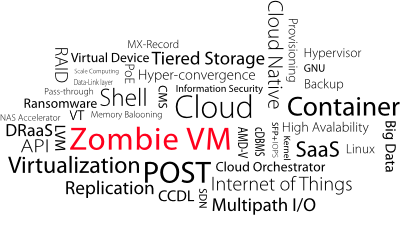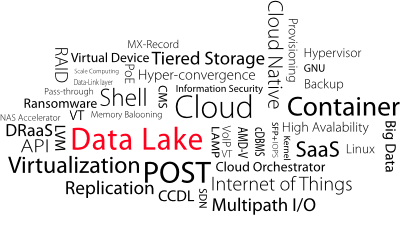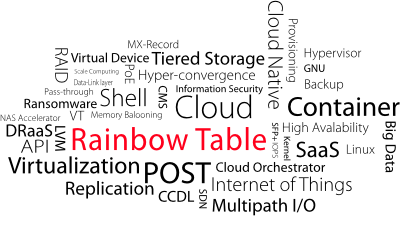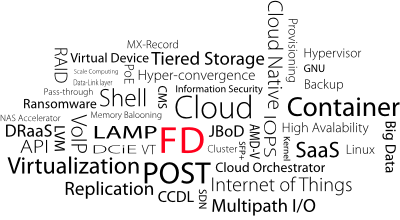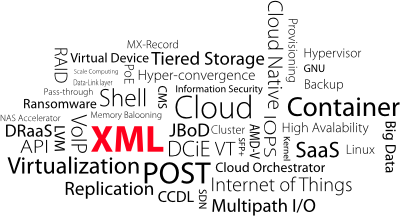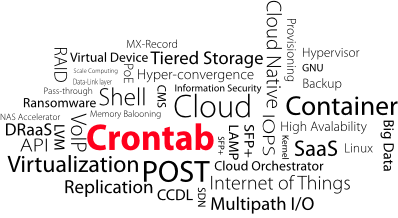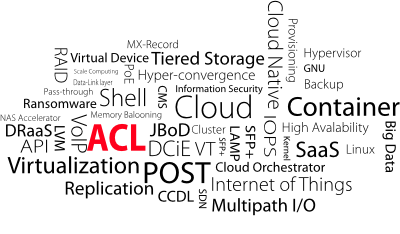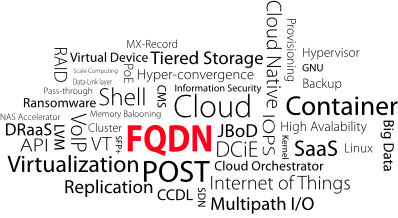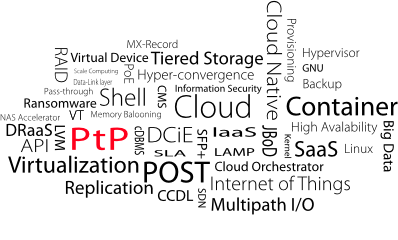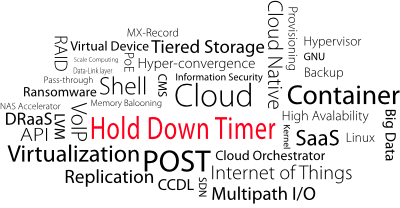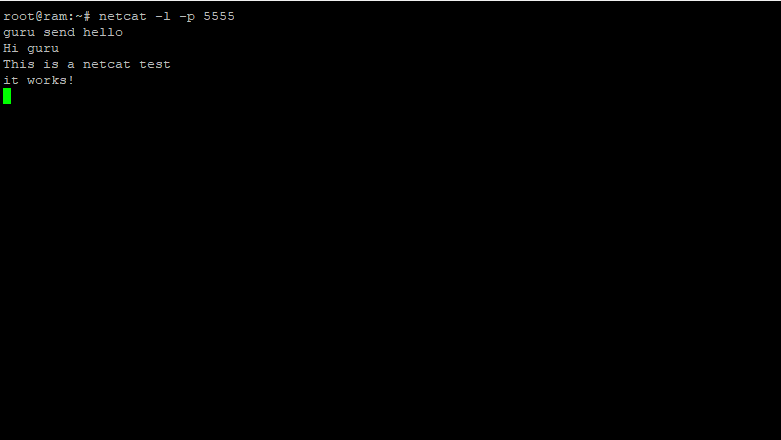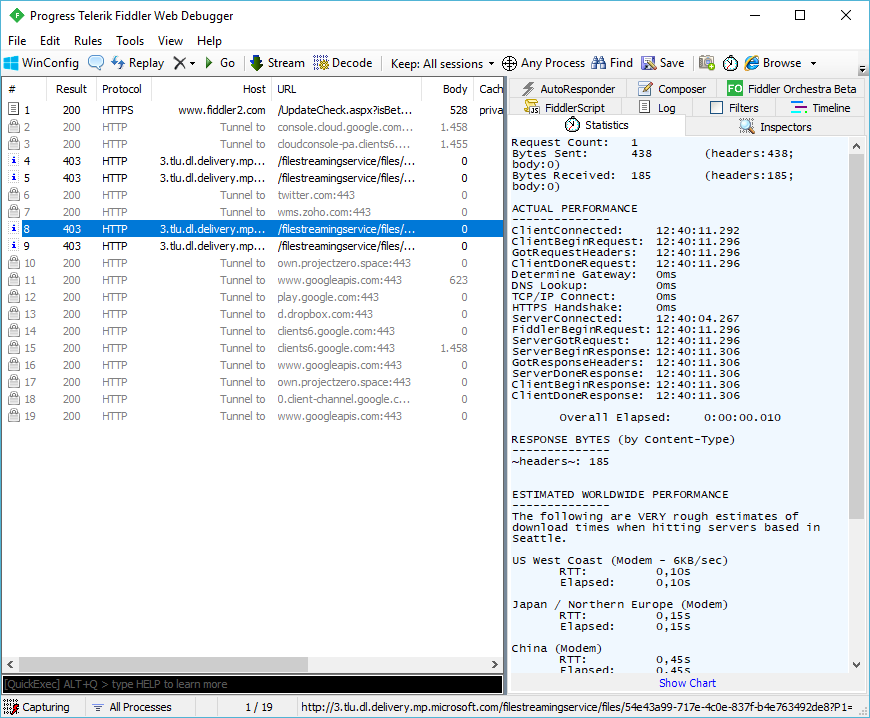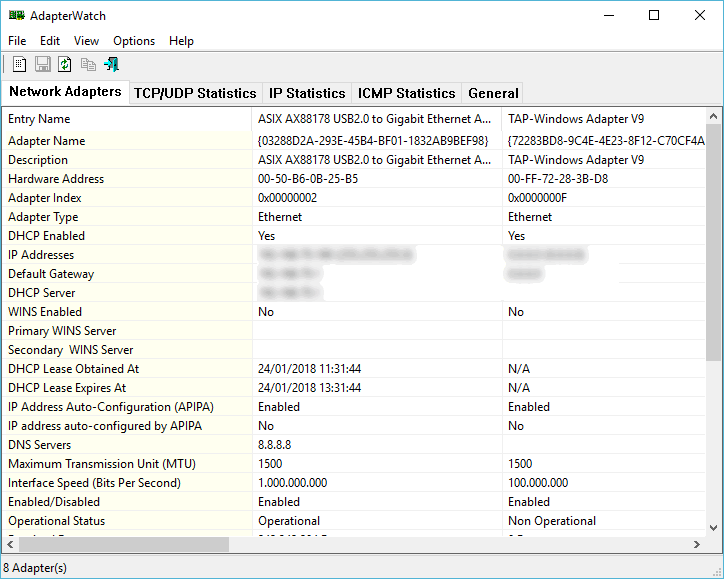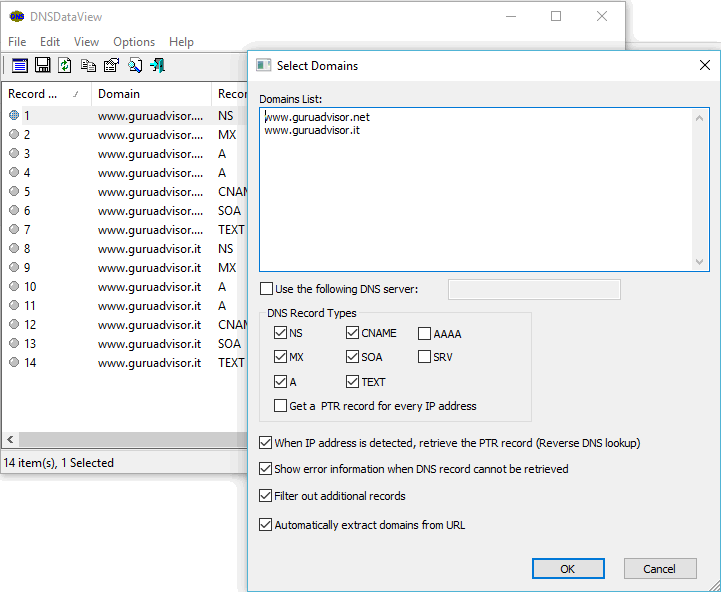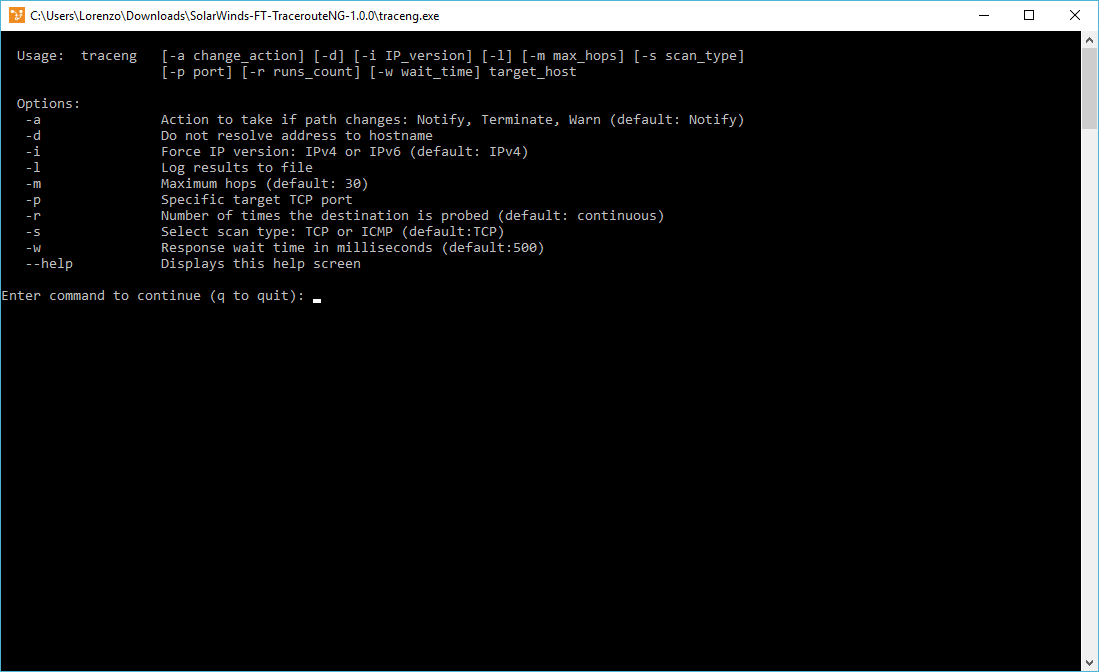- Details
-
Category: Word of the Day
-
Published: Tuesday, 16 May 2017 17:34
-
Written by Guru Advisor
The term Cold Migration can be used when talking about virtualization or in a general context with any IT system that has to be migrated from an infrastructure to another. Specifically, the adjective Cold is used to precise that the operation must be done with a powered off system, be it a physical server or a Virtual Machine.
- Details
-
Category: Word of the Day
-
Published: Monday, 15 May 2017 17:34
-
Written by Guru Advisor
The term Data Breach indicates a situation where data is leaked or stolen from an IT infrastructure, as in hacking attack to servers, databases, etc.. This term describe a large number of cases ranging from a planned theft to the loss of data due to security problems or misfunctioning of servers. In its wider usage, it also covers cases of theft/loss of physical devices with confidential data.
- Details
-
Category: Word of the Day
-
Published: Friday, 12 May 2017 17:34
-
Written by Guru Advisor
The term Hop Count defines the total numbers of hops, ie networks devices, that a packet of data must come across in order to travel the entire patch from source to destination. Hop count is fundamental metric to evaluate distancies of traffic in a network.
- Details
-
Category: Word of the Day
-
Published: Thursday, 11 May 2017 17:34
-
Written by Guru Advisor
In the context of Web applications, the term Base URL indicates the 'base' position from where to consider path related to content and elements of the application.
- Details
-
Category: Word of the Day
-
Published: Wednesday, 10 May 2017 17:34
-
Written by Guru Advisor
The term Object Storage identifies a storage architecture that, unlike the classic hieararchical approach of traditional file systems, uses an object structure. Objects are autonomous entities composed by actual data, metadata which describe their characteristics and by a unique ID. Practical examples of Object Storage are IaaS storage services like Dropbox, Google Drive, OneDrive, etc..
- Details
-
Category: Word of the Day
-
Published: Wednesday, 19 April 2017 17:34
-
Written by Guru Advisor
HVM with PV drivers defines an hybrid virtualization technique that leverages hardware-assisted virtualization (Intel VT-x and AMD-V instructions) to manage memory and CPU operations, while network and storage accesses continue to work in emulated mode. With modern processors this is often the winning choice, for it offers a better flexibility with an almost imperceptible decrease in I/O performances.
- Details
-
Category: Word of the Day
-
Published: Wednesday, 19 April 2017 17:34
-
Written by Guru Advisor
The acronym UAT stands for User Acceptance Testing and decribes the final part of software development. In this phase the product is given to users of a sample with the aim of simulating a real usage and determining a behaviour in a realistic scenario.
- Details
-
Category: Word of the Day
-
Published: Monday, 17 April 2017 17:34
-
Written by Guru Advisor
HVM stands for Hardware Virtual Machine and defines a type of virtualization used by Xen which consists in a full emulation of a PC, including processor, video card, disk controller, network interfaces, etc.. HVM virtualization is the most flexible virtualization technique, yet it penalizes performances for every operation must be simulated via software.
- Details
-
Category: Word of the Day
-
Published: Friday, 14 April 2017 17:34
-
Written by Guru Advisor
The Storage Spaces Direct (S2D) technology is a new feature of Windows Server 2016, available only with the Datacenter version. It requires at least 2 nodes with 2 SSDs and 4 additional disks each in order to work. The peculiarity of this system is the capability of using hosts with integrated storage (SATA, SAS or NVMe) instead of external ad-hoc solutions to realize an overall secure, scalable and high performing system. In its broader configuration, S2D can work with 16 hosts and up to 400 drives for a total storage capacity in the order of the Petabyte, with disks hot-add capability. Communication between nodes requires 10GbE network hardware with remote-direct memory access (RDMA).
- Details
-
Category: Word of the Day
-
Published: Thursday, 13 April 2017 17:34
-
Written by Guru Advisor
Resilient File System (ReFS) is the new file system by Microsoft introduced in Windows Server 2012 and 2012 R2 (and 8.1 as a consequence), which finally comes to a stable version in Server 2016. It was born to optimize data management and guarantee integrity and persistence to damages, even in the case of large data sets and regardless of the underlying hardware structure. Key points of ReFS are integrity, availability, scalability and proactive correction of errors.
- Details
-
Category: Word of the Day
-
Published: Wednesday, 12 April 2017 17:34
-
Written by Guru Advisor
A Zombie VM is a virtual machines with issues (subtle, most times) that provoke an anomalous resource usage of the host it runs on, also after being detached. A synonym of Zombie VM is Orphan VM.
- Details
-
Category: Word of the Day
-
Published: Monday, 10 April 2017 17:34
-
Written by Guru Advisor
The term Data Lake comes from the Big Data world and describes a "save everything" approach here each piece of data is stored, be it structured or not. Data Lake represents a large repository composed by data thus collected and easily accessible.
- Details
-
Category: Word of the Day
-
Published: Friday, 07 April 2017 17:34
-
Written by Guru Advisor
The term Rainbow Table identifies a table used in the cryptography sphere for the research of clear ciphering keys. The table is a compromise between running time and the request of resources needed to decrypt keys in hash format, generated by a certain ciphering function. This technique was conceived by Martin Hellman, but only in a theoric way as it would require too many Terabytes of memory to store all possible hashes. Later Philippe Oechslin optimized this concept so that it could be used in practice.
- Details
-
Category: Word of the Day
-
Published: Monday, 30 January 2017 17:34
-
Written by Guru Advisor
HTML5 is a markup language for the creation of Web pages, first published in October 2014. It’s conceived as the successor of HTML4 and as the substitute framework of Adobe Flash. One of the main features is the capability of storing (within the browser’s local cache) a large quantity of data that can be used by Web-based applications also without an Internet connection. HTML5 is more secure, flexible and lighter than Flash.
- Details
-
Category: Word of the Day
-
Published: Monday, 30 January 2017 17:34
-
Written by Guru Advisor
The tem File Descriptor describes a non negative integer value, peculiar of Linux/Unix operating systems, that identifies a certain file, socket or running process (that is making I/O operations) within the system. This ID is generated by the kernel and it's used and ID index in tables of active entities.
- Details
-
Category: Word of the Day
-
Published: Thursday, 26 January 2017 17:34
-
Written by Guru Advisor
XML stands for eXtensible Markup Language and defines a markup language that is based on a specific syntax to define and control the meaning of the elements contained in a text. The main characteristic of XML is creating custom tag, hence the name eXtensible.
XML is also often used to export data in a standard format from a proprietary database.
- Details
-
Category: Word of the Day
-
Published: Tuesday, 24 January 2017 17:34
-
Written by Guru Advisor
The term Ads (Advertising) is a generic term for all advertising communication techniques that are used to promote a certain product. In the IT world it’s commonly found while browsing the Web as banners inside Web pages that capture the attention of the reader.
You can limit or block Ads while browsing by installing an “Ad-blocker”.
- Details
-
Category: Word of the Day
-
Published: Tuesday, 24 January 2017 17:34
-
Written by Guru Advisor
The term Ad-blocker defines a browser component (if talking about Web browsing) which can intercept and block ads within a Web page that can be annoying, hinder the experience and slow the loading because of all those extra ads content.
- Details
-
Category: Word of the Day
-
Published: Monday, 23 January 2017 17:34
-
Written by Guru Advisor
Crontab is a UNIX command that creates a table (or list) of commands that the operating system will execute automatically according to a certain schedule. The crontab command creates a file called Crontab file.
- Details
-
Category: Word of the Day
-
Published: Friday, 20 January 2017 10:00
-
Written by Guru Advisor
The acronym ACL stands for Access Control List and basically defines a table used by an operating system, or a firmware (ie network devices) where access rights to resources are specified for each user. Every object in the system has a specific security attribute which identifies its own ACL and regulates the usage by part of users according to the assigned privileges.





